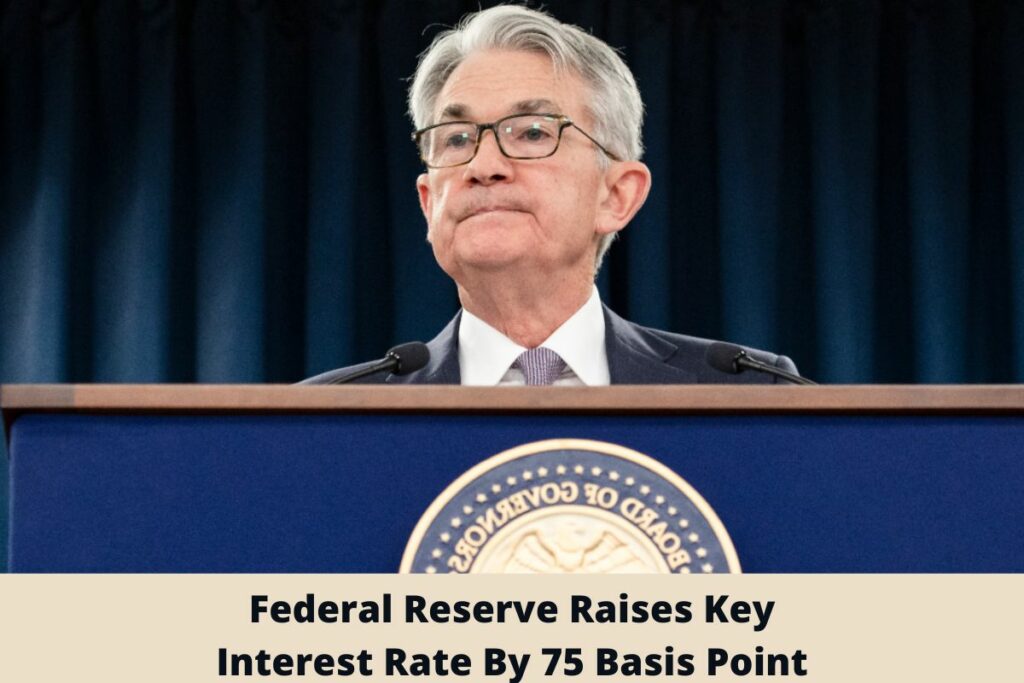To slow the economy, the Federal Reserve increased interest rates by another three-quarter of a point. Consumers have already felt the effects of the growing cost of living, but rising rates also present possibilities and challenges.
To stop the relentless inflation, the Federal Reserve increased the target federal funds rate by an additional 0.75 percentage points after its two-day meeting on Wednesday. The benchmark short-term borrowing rate has already been increased by the Fed by 1.5 percentage points this year, including the highest hike in almost three decades of 75 basis points in June.
The central bank has stated that more hikes will continue unless inflation clearly shows signs of slowing.
What is the Federal Funds Rate?
The interest rate at which banks lend and borrow money from one another overnight is known as the federal funds rate, and it is determined by the U.S. central bank. The Fed’s actions nonetheless have an impact on the borrowing and saving rates that consumers see daily even though that is not the rate they pay.
Read More:
- What Is PSiRA Renewal Online Booking Online Application Form Registration?
- Is Appking io App Safe and How To Download?
First off, the rate increase will coincide with an increase in the prime rate, which would raise financing costs for many types of consumer borrowing right away. Conversely, rising interest rates also indicate that savers will profit more from their accounts.
What Borrowers Should Know About Higher Rates?
The first rates to rise will be those for short-term borrowing. According to Greg McBride, senior financial analyst at Bankrate.com, “variable rate loans like credit cards and home equity lines of credit will be the largest vulnerability” if the Federal Reserve raises interest rates at an unprecedented rate.
There is a clear link to the Fed’s benchmark because the majority of credit cards have a variable interest rate. The prime rate and credit card rates increase in tandem with an increase in the federal funds rate.
According to Ted Rossman, a senior industry analyst at CreditCards.com, annual percentage rates are now a little over 17 percent on average but may reach closer to 19 percent by the end of the year, which would be a record high. That implies that everyone who has a credit card balance will soon have to pay much more merely to pay the interest rates.
The smartest thing you can do when rates climb is pay off debt before higher interest costs keep you down. Try phoning your credit card company to negotiate a lower rate, consolidate and pay off high-interest credit cards with a reduced interest personal or home equity loan, or switch to an interest-free balance transfer credit card if you’re carrying debt.
For people who have credit card debt, “zero-percent balance transfer offers might be a lifesaver,” according to Matt Schulz, the chief credit analyst at LendingTree. While 15-year and 30-year mortgage rates are set and correlated with Treasury yields and the economy, adjustable-rate mortgages and home equity lines of credit are also linked to the prime rate.
However, anyone looking to buy a new house has significantly reduced their purchasing power since rates have nearly quadrupled since the beginning of the year. The cost of all automobiles is increasing along with interest rates on new loans, so even if auto loans have fixed payments, you will spend more in the coming months if you plan to purchase a car.
Rate increases on federal student loans won’t immediately affect the majority of borrowers since the rates are fixed. However, if you’re preparing to take out a federal student loan for college, be aware that the interest rate has already increased to 4.99 percent for the 2022–2023 academic year, from 2.75 percent in 2020–2021 and 3.73 percent last year.
If you have a private loan, it may be fixed or have a variable interest rate based on Libor, prime, or T-bill rates. As the Fed rises interest rates, borrowers will likely pay more in interest, though the amount will depend on the benchmark.
What Savers Should Know About Higher Rates?
The good news is that following many straight rate increases, savings account interest rates are now higher. Deposit rates are not directly influenced by the Fed, although they are often connected with changes in the target federal funds rate.
Savings account rates at some of the biggest retail banks, which had been around zero since the beginning of the epidemic, are now, on average, up to 0.10 percent.
BREAKING: The Federal Reserve delivers its second major rate hike in successionhttps://t.co/0RnytDQtG6
— TheStreet (@TheStreet) July 27, 2022
Top-yielding online savings account rates are as high as 1.75 percent to 2 percent, which is significantly higher than the average return from a conventional, brick-and-mortar bank. This is due, in part, to fewer administrative expenditures.
The “Federal Reserve Raises Key Interest Rate” article goes into great detail about her passing. Keep coming back to see if anything new has been added. If you enjoy the story, please tell others about it. To show your appreciation for our work, please visit Newsconduct.com.

